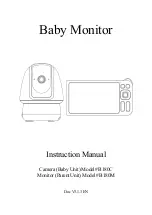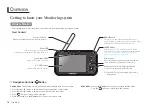
6
Table 1 classifies blood pressure risk by measured values according to the
recommendations of the World Health Organisation (WHO):
Classification
Category
Systolic
Pressure
(mmHg)
Diastolic
Pressure
(mmHg)
Measures
Risk Category
Indicator
Colour
Hypotension
Lower than 100 Lower than 60 See your doctor
Optimum
100 to 120
60 to 80
Self-check
Green
Normal
120 to 130
80 to 85
Self-check
Yellow
High Normal
130 to 140
85 to 90
Consult your
doctor
Yellow
Mild
Hypertension
140 to 160
90 to 100
Seek medical
advice
Red
Moderate
Hypertension
160 to 180
100 to 110
Seek medical
advice
Red
Severe
Hypertension
Higher than
180
Higher than
110
Seek urgent
medical advice
Red
TABLE 1: Blood pressure value and risk classification according to the recommendations of
the World Health Organisation.
Further Information
• If your values are normal under resting conditions but exceptionally high
under conditions of physical or psychological stress, it is possible that
you are suffering from “labile hypertension”. Consult your doctor if you
suspect this may be an issue.
• If the systolic and diastolic blood pressures fall into non-corresponding
categories, the higher category determines the hypertensive risk. For
example, a systolic pressure of 185 and a diastolic pressure of 95 is
classified into the severe hypertension category.
• The monitor is equipped with a Risk Category Indicator that classifies
measurements into options based on the WHO blood pressure risk
classifications. See Table. 1.
• At the completion of the measurement, an arrow on the LCD display will
automatically position the result into the correct segment of the coloured
Risk Category Indicator, to confirm your present risk.
• Measured diastolic blood pressure values above 120mmHg require
immediate medical treatment.







































